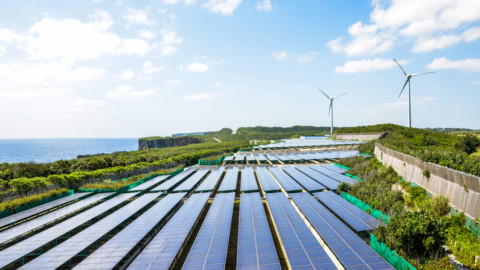The Victoria – New South Wales Interconnector West (VNI West) has reached a new milestone, with the Australia Energy Market Operator Victorian Planning (AVP) implementing a Ministerial Order.
Australian Energy Market Operator Victorian Planning (AVP) and Transgrid have released the final report in the regulatory investment test for VNI West, marking the end of this part of the regulatory process which began in 2019.
The Order will connect VNI West to the planned Western Renewables Link (WRL) at a terminal station at Bulgana in Victoria’s west, then link to a terminal station near Kerang in north central Victoria before crossing the Murray River north of Kerang – AEMO’s preferred option.
The Project Assessment Conclusions Report (PACR) outlines the preferred option and a geographic area of interest for the project. The option is forecast to deliver approximately $1.4 billion in net market benefits1, generating significant savings for consumers through avoided generation, storage and fuel costs, and transmission expansion cost savings for Renewable Energy Zones (REZs).
VNI West is a 500kV transmission line which will connect the Victorian and New South Wales grids, ensuring reliable electricity access during high demand periods and allowing for around 3.4GW of additional renewable generation to be built across the solar-rich Murray River REZ and wind-rich Western Victoria REZ.
AVP and Transgrid completed six weeks of community consultation in relation to alternate options for VNI West and received feedback and submissions from local communities and stakeholders.
The feedback reshaped where VNI West crosses the Murray River, with the final option adjusted to reflect stakeholder feedback identifying constraints around culturally and environmentally significant areas as well as zones of irrigated agriculture.
AVP Group Manager, Nicola Falcon, said that significant consultation and stakeholder feedback had contributed to the proposed option which maximises benefits to electricity consumers and unlocks Victoria’s renewable energy potential.
“We thank all the farmers, community groups, councils and Traditional Owners who have contributed to the consultation, which will continue as the transmission line design is finalised,” Ms Falcon said.
“The feedback received has helped us identify a preferred option for the critical transmission line – a variant of the previously proposed option – that delivers the most benefits for consumers and more electricity generation from three REZs in Victoria and New South Wales.
“By crossing the Murray River further north-west, the project can also avoid some sensitive cultural areas and prime irrigation land identified in feedback from local communities and avoid the habitat of the endangered Plains-wanderer.”
Prior to publication of the PACR, the Victorian Minister for Energy and Resources, Lily D’Ambrosio, announced a Ministerial Order under the National Electricity (Victoria) Act 2005 to identify the preferred option for the Victorian part of VNI West and progress work to identify a final route through consultation with landowners, Traditional Owners and community stakeholders.
“Progressing critical transmission projects like VNI West is necessary to deliver cheaper, more reliable renewable energy to Victorian homes and businesses,” Ms D’Ambrosio said.
“There can be no energy transition without new transmission infrastructure – as Victoria moves towards 95 per cent renewables by 2035, we have a duty to modernise our electricity network.”
VNI West still requires relevant planning and environmental approvals, which will provide more opportunities for community members and Traditional Owners to share their views on the project.
AEMO will continue ongoing consultation as it works to refine the route, with community input will play a crucial role in helping design a route that minimises impacts on the landholders, the environment and farming operations.
Transgrid Executive General Manager of Major Projects, Gordon Taylor, said, “Transgrid will now work with communities, Traditional Owners and stakeholders to refine the New South Wales section of the project. This critical transmission infrastructure will reshape the National Electricity Market and enable significant sharing of energy with Victoria.
“We are fully committed to reducing impacts wherever feasible and providing local communities, Traditional Owners and businesses with opportunities to collaborate with us on the development of our broader community investment and benefits program which includes local content and employment opportunities.”
Acknowledging the role the community plays in hosting transmission infrastructure, landholders will be entitled to payments $8,000 per year per kilometre of transmission hosted for 25 years. These payments are in addition to existing arrangements for compensation, which cover any loss of land value.
Once a preferred corridor for VNI West is identified, AEMO will allocate landowners potentially hosting transmission lines a Land Liaison Officer – and will work directly with landowners to minimise impacts to their land, including interruptions to normal farming activities.
VNI West is one element in the transformation of Victoria’s electricity grid, which the government says will see the state reach 95 per cent renewables by 2035 and create 59,000 jobs.
















